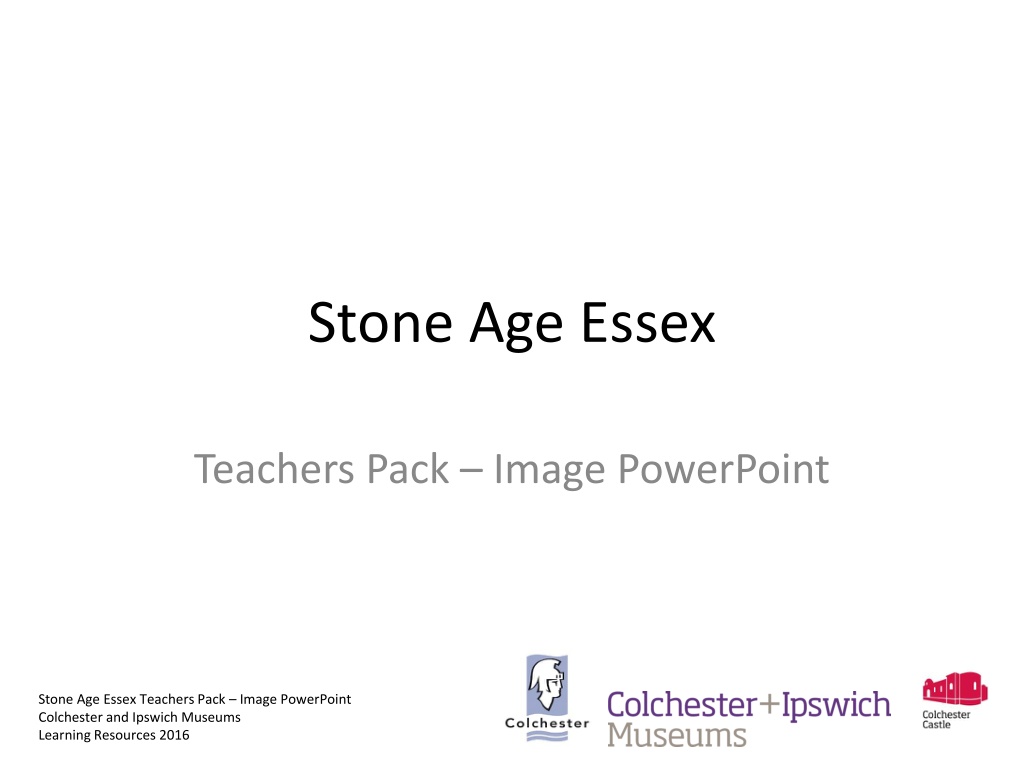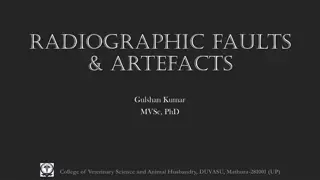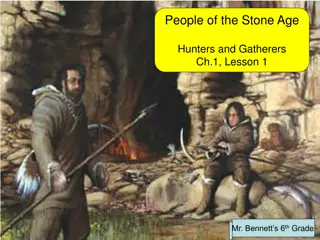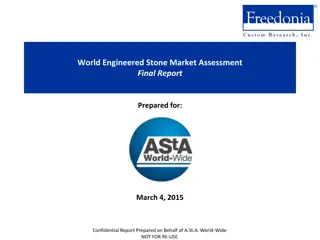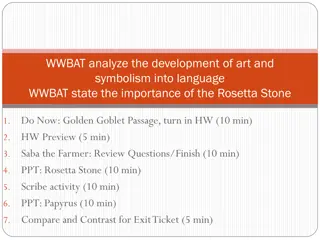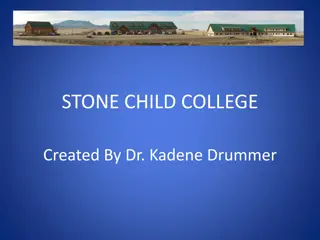Stone Age Artefacts Discovered in Essex, UK
Explore a collection of ancient Stone Age artefacts discovered in Essex, UK, including a Clactonian spearpoint dating back 450,000 years, late Upper Palaeolithic shouldered points, Mesolithic microliths, and Neolithic pottery fragments. These archaeological finds offer insights into the tools, hunting techniques, and craftsmanship of early human civilizations in Britain.
Download Presentation

Please find below an Image/Link to download the presentation.
The content on the website is provided AS IS for your information and personal use only. It may not be sold, licensed, or shared on other websites without obtaining consent from the author. Download presentation by click this link. If you encounter any issues during the download, it is possible that the publisher has removed the file from their server.
E N D
Presentation Transcript
Stone Age Essex Teachers Pack Image PowerPoint Stone Age Essex Teachers Pack Image PowerPoint Colchester and Ipswich Museums Learning Resources 2016
OBJECT IMAGES Stone Age Essex Teachers Pack Image PowerPoint Colchester and Ipswich Museums Learning Resources 2016
Clactonian Spearpoint Palaeolithic This spear point was discovered at Clacton- on-sea in 1911. Dating back 450,000 years this spear point is the oldest wooden spear to have been found in Britain. Stone Age Essex Teachers Pack Image PowerPoint Colchester and Ipswich Museums Learning Resources 2016
Shouldered Point Late Upper Palaeolithic A shouldered point is a projectile (throwing) tool with a notch on one side of the base. These tools would have been used in hunting and general multipurpose tasks. While no evidence survives a shouldered point could have been attached to a wooden shaft. These tools were found on the Dovercourt foreshore, Harwich, Essex by local collectors Eric and Gordon Hazleton between 1973 and 1993. These tools would have been made by humans surviving in Britain during the Ice Age. The two shouldered-points pictured have been dated to the Late Upper Palaeolithic. Stone Age Essex Teachers Pack Image PowerPoint Colchester and Ipswich Museums Learning Resources 2016
Microliths Mesolithic The development of small microliths, such as spear points and arrowheads, shows the advance from Palaeolithic stone tools to more delicate, refined implements. The development of spears and also of bows and arrows would have made hunting more efficient, allowing Mesolithic people to in woodland environments. This particular example was found at Harwich in 2009 by local collectors Eric and Gordon Hazleton between 1973 and 1993. Microliths were commonly attached to sticks used like harpoons, see image below. Stone Age Essex Teachers Pack Image PowerPoint Colchester and Ipswich Museums Learning Resources 2016
Neolithic Pottery Neolithic The Neolithic marks the first use of pottery in Britain. Pots were used for the storage of grain, cooking and ceremonial activities connected to belief systems. This type of early pottery is called 'grooved ware' after the decoration around the top and can be found in Neolithic sites throughout Britain. This example is a Neolithic 'grooved ware' pot fragment; decorated with grooved horizontal wavy lines. It was found partially buried in the London clay at Dovercourt and found by local collectors Eric and Gordon Hazleton between 1973 and 1993. Stone Age Essex Teachers Pack Image PowerPoint Colchester and Ipswich Museums Learning Resources 2016
Neolithic Polished Axe Neolithic The requirement to clear forests for farming resulted in the production of axes there were stronger, polished and attached to wooden handles. Many of these tools required skilled workers and may have taken months to complete. As such they were highly valued, traded and may have been associated with early religion. Polished axe heads have been found in graves unused, this suggests that they were valued possessions made to show wealth and status rather than to be used as tools. The example pictured was found in Stanford-le-Hope, Essex in 1913. Stone Age Essex Teachers Pack Image PowerPoint Colchester and Ipswich Museums Learning Resources 2016
Neolithic Sickle Neolithic This flint sickle dates from the late Neolithic, around 2000 BC. Flint sickles are an uncommon find. Tools such as these demonstrate the specialisation of stone tools that contributed to the development of farming. The curved blade helps us to identify it as a sickle, similar to ones used in farming until relatively recently. This example was found in Dovercourt, Essex in 1987. Stone Age Essex Teachers Pack Image PowerPoint Colchester and Ipswich Museums Learning Resources 2016
Domesticated Animal Bones, Flint Tools and Grooved ware pottery Neolithic These animal bones, flint tools and pottery were found buried together at the site of a circular ditch in Lawford, Essex. The pottery found consists of eleven fragments of grooved ware pots, a common type of pottery found throughout Britain during the Neolithic. The deliberate burial of the bones, tools and pottery together suggests this was the location of a ceremonial feast. During the Neolithic, ritualistic behaviour can be seen to increase, with tools being used for ceremonial as well as practical purposes. Stone Age Essex Teachers Pack Image PowerPoint Colchester and Ipswich Museums Learning Resources 2016
